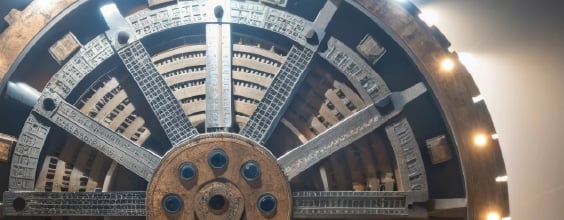Drivers using sat-nav to divert around improvement works on the motorway have created rat-runs through county towns – to the annoyance of local residents and councillors who represent them. And while the council runs an efficient information service, some incidents on strategic network have caused knock-on effects on local roads before the local council could communicate with drivers or put mitigation measures in place.
Since the council adopted a digital approach to road planning and design, Beth has seen far fewer problems. Instead of having to solve issues that are already occurring out on the roads, her days are spent tweaking and fine-tuning the digital systems that help keep roads through the county running smoothly and drivers well informed.
Access to a digital twin – a system-wide, digital representation of the highways network in context – enables Beth and her colleagues to plan ahead. Using the digital twin, road designers can share proposed motorway schemes with Beth so she can see the likely impact on the local road network and communicate these to councillors . For example, they were able to see a proposed new motorway service station in the digital twin and plan for safe service access along the back roads.
Beth can also ensure that diversion routes for planned motorway schemes are suitable and free from roadworks. This works both ways: if the council is planning major roadworks on a key diversion route for the strategic road network, Beth can ask for it to be flagged in the digital twin so that schemes requiring this diversion aren’t initiated while the works are underway. Similarly, Beth works with her town planning colleagues to keep the digital twin updated with proposed and approved developments that would affect the strategic road network running through the county – ensuring that any issues can be highlighted at an early stage.
This digital-enabled, whole-system approach helps to ensure that people can move smoothly around and through the county. But Beth knows that things can’t always go smoothly: unexpected incidents can, and do, occur. Eastshire’s roads experience accidents, flash flooding and – as a semi-rural county – occasionally an escaped flock of sheep. When things go wrong, rapid communication is key.
With integrated digital systems, it’s mere seconds before an incident on the motorway detected by cameras is confirmed and shared automatically through the council’s communication channels . Even social media posts are fully automated, so that the county’s drivers are alerted at the same time as Beth. They can avoid the incident while Beth can put in place a diversion route that has already been thoroughly planned and tested digitally to avoid any unintended knock-on disruption.
Do drivers know what Beth’s job involves? She doubts it, but that’s the way she likes it – using digital tools to keep people moving seamlessly from local to strategic roads and back again, with drivers unaware of the work that goes on behind the scenes.
“People don’t know, and don’t care, whose roads they’re driving on ,” says Beth. “They just want a smooth journey – and that’s I can give them, thanks to the digital tools we have at our disposal.”














